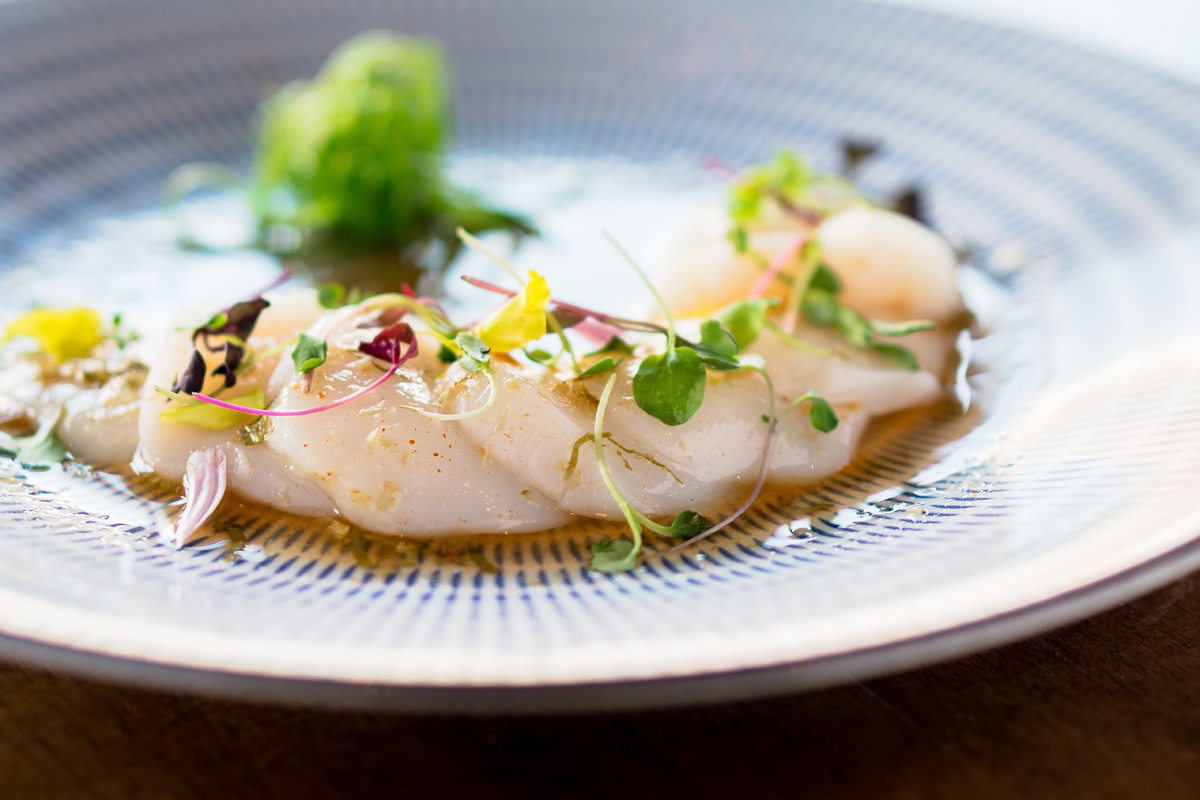
Of all the work done in a kitchen, the art of plate presentation is one of the most intriguing. Creating a visually stunning picture on a plate and hearing “Wow!” brings a great sense of creative satisfaction. Equally impressive is the detailed thought that goes into the entire process.
First, the plate must be big enough to allow the food to stand out, but small enough that the portions don’t look smaller than they actually are. Think of the rim of the plate as a picture frame, and consider using the rule of thirds to highlight the focal point(s). The rule of thirds prescribes placing the focal point of the dish to either the left or right side of the plate, rather than the center. Plate with a clock in mind. From the diner’s point of view, protein should be between 3 and 9, starch or carbohydrate from 9 to 12, and vegetable from 12 to 3.
Equally important, make sure to plate moist or runny ingredients first, as they tend to move during delivery if they aren’t held down by other foods. What’s more, when serving small foods like shrimp, scallops or bite-sized appetizers, always give guests odd quantities. It creates more visual appeal, and diners will also subconsciously perceive that they’re getting more food.
You may not be surprised to learn that one of the best-kept secrets to beautiful plating is paying close attention to the details. While the focus will obviously be on the protein, considering how the other elements of the plate create color and contrast is also very important. Create a beautiful background by adding green vegetables or brightly colored fruits as accent points. You can also pair ingredients with complementary colors, as this will further enhance the dish’s visual appeal.
Once the main ingredients are set, top the dish with delicious sauces. Think of the squeeze bottle or spoon as a paintbrush. Create accent dots on one side of the plate (don’t forget the aforementioned rule of thirds!) or lightly drizzle sauce over the main ingredients so guests get a little bit in every bite.
The Proper Plate
The general consensus amongst restaurateurs is that plain white plates yield the best impact. They provide a high contrast and neutral background for colorful food. Just think of all the white plates you’ve eaten off of over the years. Black plates with bright-colored foods can also look striking, and red plates can make a dramatic impression and are considered good luck in some cultures. Pastels are cool and soothing, perfect for summery meals. The key here is that if you use colored plates to be sure that you can still see the food. Dark food on a dark plate won’t work. Also, overly designed plates with lots of colors, flowers and other patterns will detract from the food and make artistic presentations more difficult — unless of course you’re dining in a charming countryside B&B living your best life.











